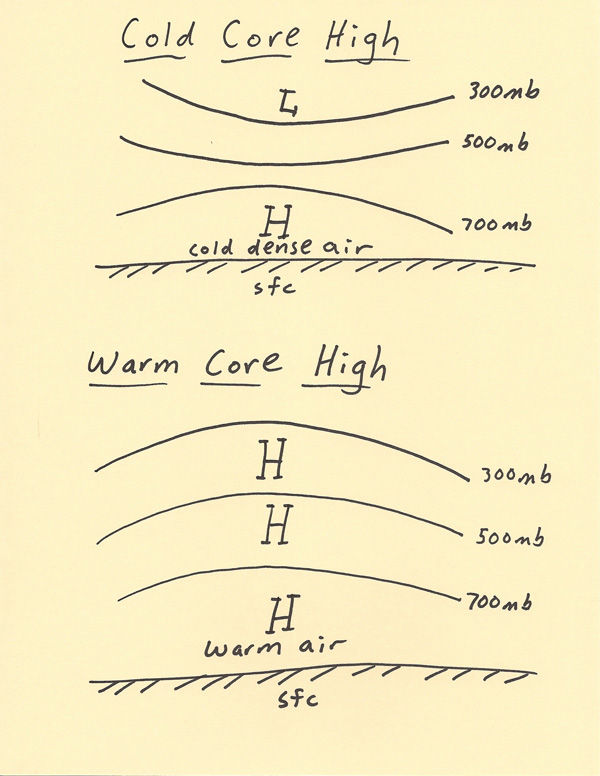
HABYTIME MINI LECTURE 29:
COLD VS. WARM CORE HIGH
| |||||||||||||||||||||||||||||||||||||||||||||||||||||||||||||||||||||||||||||||||||||||||||||||||||||||||||||||||||||||||||||||||||||||||||||||||||||||||||||||||||||||||||||||||||||||||||||||||||||||||||||||||||||||||||||||||||||||||||||||||||||||||||||||||||||||||||||||||||||||||||||||||||||||||||||||||||||||||||||||||||||||||||||||||||||||||||||||||||||||||||||||||||||||||||||||||||||||||||||||||||||||||||||||||||||||||||||||||||||||||||||||||||||||||||||||||||||||||||||||||||||||||||||||||||||||||||||||||||||||||||||||||||||||||||||||||||||||||||||||||||||||||||||||||||||||||||||||||||||||||||||||||||||||||||||||||||||||||||||||||||||||||
METEOROLOGIST JEFF HABY
The cold core high is more common and significant near and during winter. In the polar and high latitude regions, very little sunlight
absorbs into the ground surface. Thus, the ground is able to cool off to extremely cold temperatures. Cold air gets denser the colder
it gets. Cold air is also very stable and will sink thus an air mass of very cold air will develop at the surface. The region that
the air mass is forming can be thought of as a huge dome of very cold dense air. Around the center of the air mass is generally where
the polar/arctic air mass is deepest and coldest. This very dense cold air contributes to a high surface pressure. Many of the highest
pressures recorded at sea level are due to cold core highs. Since the densest air is close to the surface, a cold core high will weaken
with height. The pressure decreases rapidly with height in cold dense air thus higher in elevation the high pressure system will be weak, non-existent
or replaced by a low pressure region or trough. Longwave troughing will often occur above the cold dense air, especially once the cold air
moves out of its source region and into lower latitudes. The top diagram below shows the basic structure of a cold core high.
A warm core high is more common and significant near and during summer. The warm core high most commonly develops in tropical and
semi-tropical locations. The warm core high develops due to warm air and stability through a deep layer of the troposphere. The air
is stable and sinking which causes the air to warm even more (adiabatic warming). As air warms, the density of the air decreases. This
decreasing density causes an expansion of the troposphere. Thus, the top of the troposphere is at a relatively high elevation within
a warm core high. The center of the high tends to be where there is the most stability and sinking and when analyzing various pressure
levels of the warm core high, the center of the high will be in a similar location. The warm core high is deep, showing up at all
pressure levels (i.e. surface, 850, 700, 500, 300 mb).

|
|
|

